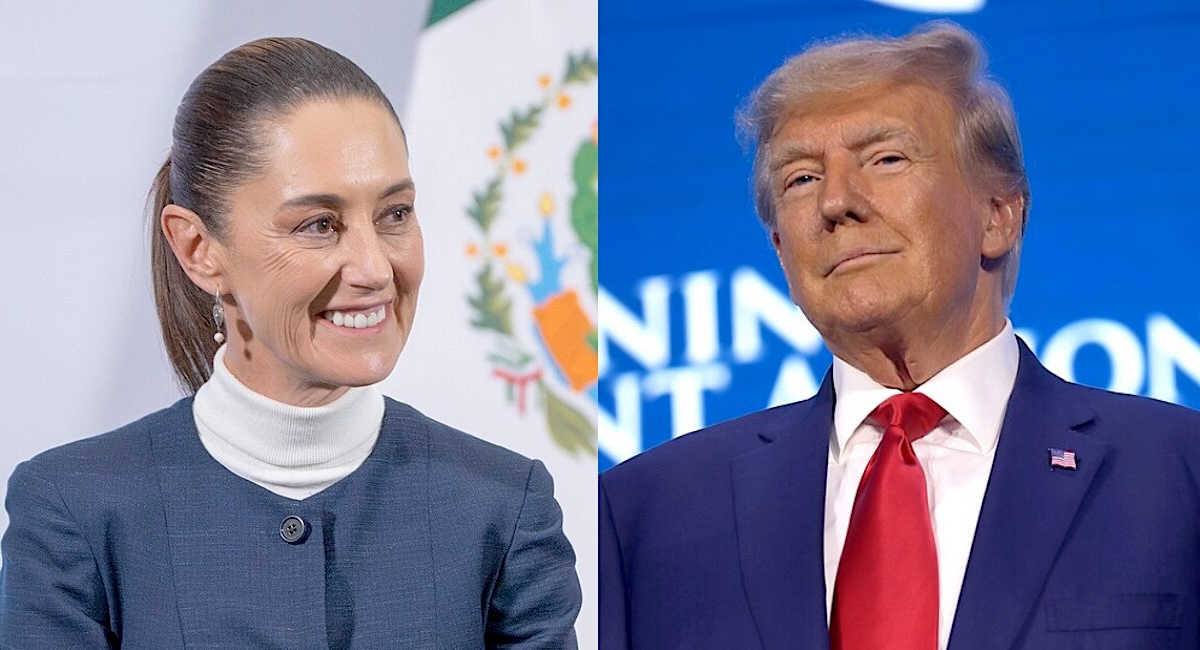As the international order continues to shift under pressure from the Trump administration’s aggressive tariff policies, Mexico’s diplomatic strategy has garnered significant attention. Unlike other nations that either clash with or capitulate to President Trump, Mexico has quietly secured its national interests.
On April 25, American Community Media (ACoM) hosted a media briefing titled “U.S.-Mexico Relations and Diplomatic Models in the Trump Era,” spotlighting the foreign policy and leadership of Mexican President Claudia Sheinbaum, who has so far succeeded in securing tariff exemptions and delays from the United States.
President Sheinbaum, speakers agreed, has consistently avoided immediate and aggressive responses to new U.S. tariff announcements, instead opting for a calm and pragmatic negotiation strategy that effectively defused potential conflicts.
For example, on February 3—one day before the U.S. was set to impose a 25% tariff on Mexican goods—Sheinbaum announced via her social media channels a plan to bolster security along Mexico’s northern border. She pledged to deploy 10,000 National Guard troops to curb illegal immigration and fentanyl trafficking, proactively addressing some of Trump’s key demands. In response, the U.S. agreed to delay the tariff measures and resumed high-level negotiations with Mexican officials.
In a rare public display of praise, Trump—who is otherwise known for his blunt and forceful diplomatic approach—described Sheinbaum as an “fantastic person.” This reflected the strengthening of practical ties between the two countries, despite stark ideological differences. Notably, Sheinbaum is affiliated with MORENA, Mexico’s left-leaning political party.
Larry Rubin, president of the American Society of Mexico, stated, “President Sheinbaum has responded to U.S. demands with calm pragmatism and patience rather than emotional reactions. Recognizing that the two countries are each other’s largest trading partners, she has strategically reinforced this economic interdependence politically.”
Other participants also noted that Sheinbaum’s diplomatic strategy has provided critical support for her ongoing domestic reform agenda.
Currently, President Sheinbaum—who enjoys an eye-popping 88% approval rating at home, according to recent polling—is spearheading extensive reforms within Mexico. Her long-term economic development plan, “Plan Mexico,” focuses on strengthening domestic industry and supply chains to stimulate the domestic market and boost consumption. She is also working to relax regulations on corporate investment and enhance incentives for private sector investment to drive economic growth.
Alberto Díaz-Cayeros, professor at Stanford University’s Freeman Spogli Institute for International Studies and former director of its Latin American Studies program, referenced a 1945 study by political economist Albert Hirschman on how nations can use their economic might to gain leverage in international politics. He argued that President Trump is leveraging tariffs as a tool to forge alliances and expand influence with neighboring countries. Díaz-Cayeros added, “Trump is increasingly aware that amid an uncertain relationship with China, American capital is flowing into Mexico.”
In 2023, Mexico surpassed China as the U.S.’s largest trading partner, with bilateral trade between the two countries reaching $840 billion in 2024, compared to $582 billion with China.
Still, 100 days into his second term, Trump is facing significant domestic backlash and record-low approval ratings as he attempts various policy shifts at home, with a new New York Times/Sienna Poll last week showing him with an overall 42% approval. Significantly for the president, fewer than half (43%) of Americans approve of his handling of the economy, traditionally an area of strength for Trump.
Luis Alvarado, a political analyst based in Los Angeles, remarked, “For Mexico, this diplomatic effort is about economic stability, immigration policy, and national pride. For the U.S., it’s about maintaining strong regional alliances without unnecessary friction. Both sides are building a pragmatic and strategic relationship that benefits them mutually.”
With the stabilization of U.S.-Mexico relations, experts predict that investment conditions will improve, particularly along the border region and for companies operating in Mexico.
Díaz-Cayeros further pointed out, “Following the signing of NAFTA in 1994, there was a massive influx of U.S. investment into Mexico. Today, Mexico is evolving beyond a maquiladora (assembly-only) economy and is becoming competitive in advanced industries such as aerospace, high-end manufacturing, and medical devices.”
Rubin also highlighted a key demographic advantage: “Mexico’s median age is about 20 years younger than that of the United States. This youthful labor force is a major asset for both manufacturing and service industries, strengthening prospects for continued practical cooperation between the two nations.”
Meanwhile, David Ayon, senior researcher at Loyola Marymount University’s Levy Center, suggested that Mexico’s diplomatic model could be applied elsewhere. He recalled how, during the 2015 U.S. presidential campaign, then-President Enrique Peña Nieto invited Trump to Mexico despite Trump’s harsh criticisms of NAFTA, thus employing an indirect strategy to manage relations.
Ayon emphasized that while some disputes, such as over tomato tariffs, remain between the two countries, the Mexican government is taking a conciliatory approach. “Instead of escalating tensions, Mexico is working to reassure Trump by permitting U.S. drone surveillance along the border and continuing efforts to de-escalate diplomatically,” he said.





